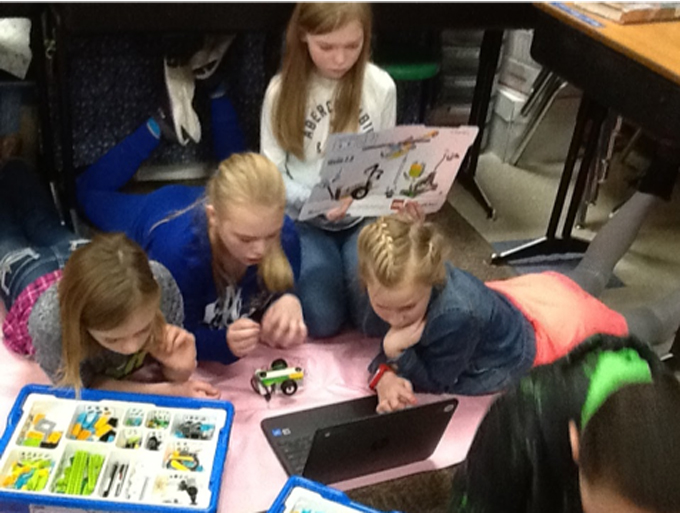
Teachers are the sine qua non—indispensable part—of implementing any meaningful change in our schools. It is well documented that when teacher educators study problems of practice in their own classrooms, this can result in meaningful professional learning that not only grows the knowledge base of the teacher, but also can positively impact student learning over time.
At North Branch Area Schools in North Branch, Michigan, my colleagues and I have been looking at the embodiment of digital integration in a different esteem—as a way to embrace teacher inquiry as a legitimate means for growing insights and knowledge into classroom digital practices.
In the context of technology integration, we wanted to learn how schools can build teacher research communities that invite teachers to:
- Think deeply about their intentions with digital tools
- Test assumptions about the technology in their classrooms
- Find meaningful connections with their practice
A teacher research model of tech integration
Research shows that some schools experience challenges with the implementation of 1:1 technology initiatives in K–12 classrooms due to such factors as teacher buy-in. In our district’s attempt to think differently about integration, we explored a teacher research model that has strengthened our approach to professional learning and has increased teachers’ digital literacy knowledge through inquiry, action, reflection, and collegial sharing.
In the spring of 2017, our Technology Committee and Board of Education approved the district’s first Teacher Technology Grant Initiative. With allocations set aside, any teacher could submit an online grant application, via Google Form, for technology that would help address a problem of practice, put learning first, align with state academic standards, and cultivate rich learning for students.
Teachers were encouraged to apply on their own or with grade-level colleagues in any configuration. Online applications were accepted from all disciplines and careful consideration was given to unique applicants who had vision and drive for meaningful, minds-on, creative, tech-integrated projects.
Applicants had to describe the technology they were hoping to acquire (e.g., name, cost, quantity, model numbers) and provide a written explanation of their plan, including answers to the following prompts:
- Describe your digital focus and how this connects to a problem of practice in your classroom/s.
- What is the purpose of this project? What will students create/do?
- What role will teacher/s play in this project?
- What is the team rationale for this project (e.g., connection to grade-level content, skills, dispositions, and state academic/content area/specialty standards)?
- How many students will your project impact? What is the sustainability?
- In what specific ways will technology enrich the foundation of the project you are proposing?
- Does the design of this project have strong curricular flow and/or cross-integration of content areas?
Submission of the application was an agreement from participants to implement their technology plan during the 2017–18 school year; collect and upload digital artifacts related to their project; communicate learnings, insights, and challenges with their peers and the Board of Education; and participate in a year-end survey about their grant experience.
Proposals were blinded and scored using the Triple E Framework. Applicants were made aware that proposals could be fully funded, partially funded, or not accepted at the time. Personalized letters of acceptance were sent and personal contacts made for those projects not funded.
Insights and learnings
There is value and impact in championing teacher research models for technology integration.
With this initiative, 16 projects—Ozobots, VR Glasses, Lego WeDo Kits, and more—were funded. The outreach and impact of this approach has been far greater than we had imagined. Not only are all the digital tools being fully utilized, but many of the grant recipients are sharing their learnings with colleagues across the district. As a result, we have just approved and posted our 2018–19 Teacher Technology Grant Initiative.
Amber White is a reading specialist, a teacher consultant for the Saginaw Bay Writing Project, and the director of Curriculum and Instruction for North Branch Area Schools. You can find her on Twitter @AWhite100.
This article is part of a series from the International Literacy Association Technology in Literacy Education Special Interest Group (TILE-SIG).